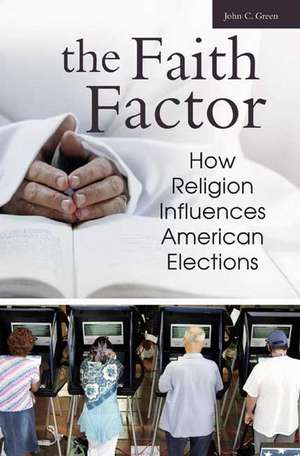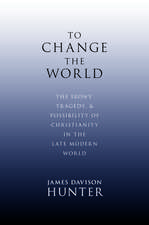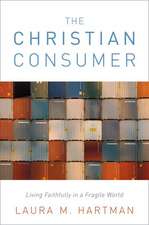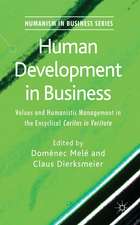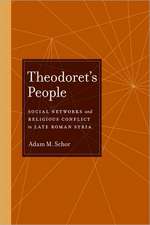The Faith Factor: How Religion Influences American Elections
Autor John C. Greenen Limba Engleză Hardback – 29 mar 2007 – vârsta până la 17 ani
Preț: 287.86 lei
Preț vechi: 349.80 lei
-18% Nou
Puncte Express: 432
Preț estimativ în valută:
55.10€ • 59.87$ • 46.31£
55.10€ • 59.87$ • 46.31£
Carte tipărită la comandă
Livrare economică 22 aprilie-06 mai
Preluare comenzi: 021 569.72.76
Specificații
ISBN-13: 9780275987183
ISBN-10: 0275987183
Pagini: 232
Dimensiuni: 156 x 235 x 24 mm
Greutate: 0.51 kg
Editura: Bloomsbury Publishing
Colecția Praeger
Locul publicării:New York, United States
ISBN-10: 0275987183
Pagini: 232
Dimensiuni: 156 x 235 x 24 mm
Greutate: 0.51 kg
Editura: Bloomsbury Publishing
Colecția Praeger
Locul publicării:New York, United States
Notă biografică
John C. Green is Senior Fellow at the Pew Forum on Religion and Public Life and Distinguished Professor of Political Science at the University of Akron. He is also Director of the Ray C. Bliss Institute of Applied Politics at the University of Akron. He is the author or editor of The Christian Right in American Politics: Marching to the Millennium, The Financiers of Congressional Elections, The Diminishing Divide: Religion's Changing Role in American Politics, and The Bully Pulpit: The Politics of Protestant Clergy. He has published many other books and articles.
Recenzii
[E]xamines the impact of religion on the 2004 presidential election, pushing the boundaries of our understanding of the role religion plays in American politics through his discussion of the old religion gap and the new religion gap. The old gap described political differences based on religious affiliation. The new gap portrays political differences based on religious behavior and belief. Green begins with analysis of the 2004 presidential election, an election which surprised some observers with the important role played by religion. The next part of the book details the two religion gaps, followed by analyses of the gaps in numerous demographic and social contexts, and across geographical regions. The analysis builds upon the findings of the Religion by Region project of the Leonard E. Greenberg Center for the Study of Religion in Public Life at Trinity College. Readers will find the statistical analyses easy to read and understand. Highly recommended. Upper-division undergraduates through practitioners.
[G]reen accomplishes his aim-namely, to document the changing role of religion in American politics over the last 60 years and probe the meaning of religious belonging, behaving, and believing as well as how these three areas affect election outcomes-he ignores the bigger questions, e.g., What are the consequences of Christian fundamentalism in American politics as it may determine the fate of the human species?
Covering three areas of religion that tend to influence election outcomes, Green illuminates the meaning of religious belonging, behaving, and believing in current political context. Each of these aspects of religion affects the way people vote and their views of issues, ideology, and partisanship. He reviews the importance of moral values in the major party coalitions and discusses the role religious appeals have in presidential campaigns. In addition, he compares the influence of religion to other factors such as gender, age, and income. Given the emphasis on the influence of religion on American politics and elections in recent years, this book serves as a cogent reminder that the situation is not new, and offers a careful analysis of the real role faith plays in the electing of government officials.
[A] must-read for anyone interested not only in why religion has become more important in elections, but also in how..The Faith Factor at all times sticks to its tables. It does not offer sweeping generalizations..But it is an extremely valuable for anyone trying to figure out where the United States is headed.
Green..takes a detailed look at the poll results from recent presidential elections and overturns of number of preconceptions about the role religion plays..What Green's detailed statistical analysis shows is that religion does indeed matter, but in ways that we have only begun to fathom. Equipped with Green's more nuanced appreciation of religion's role in voting perferences, we can map out new features in the political landscape..In a context in which secular pollsters too often set the agenda for political analysis, Green's fascinating and challenging book offers an important corrective.
[E]xplores the changing dynamics of religion and national politics..This new book, built on detailed public opinion polls, will cement Green's position as our preeminent student of the relationship between religion and American politics..[t]hese books each underscore the persistence of an ideological and cultural center in American life. That center may provide a wider audience than both parties now suspect if the next president tries to narrow the political and social divides that lace through the stories Lindsey and Green tell so well. (reviewed in conjunction with Lindsey, The Age of Abundence)
Drawing on survey data from a number of sources, Green provides basic information on American religion and its relationship to American elections as revealed by the 2004 presidential election. He covers belonging versus behaving and believing; issues and coalitions; gender, age, and income; the regional context; campaign contact and activism; and the future.
Many can learn not only from the book's content, but also the author's ease of explaining complex ideas and synthesizing large amounts of data. The book is truly a contribution to the discipline.
[G]reen accomplishes his aim-namely, to document the changing role of religion in American politics over the last 60 years and probe the meaning of religious belonging, behaving, and believing as well as how these three areas affect election outcomes-he ignores the bigger questions, e.g., What are the consequences of Christian fundamentalism in American politics as it may determine the fate of the human species?
Covering three areas of religion that tend to influence election outcomes, Green illuminates the meaning of religious belonging, behaving, and believing in current political context. Each of these aspects of religion affects the way people vote and their views of issues, ideology, and partisanship. He reviews the importance of moral values in the major party coalitions and discusses the role religious appeals have in presidential campaigns. In addition, he compares the influence of religion to other factors such as gender, age, and income. Given the emphasis on the influence of religion on American politics and elections in recent years, this book serves as a cogent reminder that the situation is not new, and offers a careful analysis of the real role faith plays in the electing of government officials.
[A] must-read for anyone interested not only in why religion has become more important in elections, but also in how..The Faith Factor at all times sticks to its tables. It does not offer sweeping generalizations..But it is an extremely valuable for anyone trying to figure out where the United States is headed.
Green..takes a detailed look at the poll results from recent presidential elections and overturns of number of preconceptions about the role religion plays..What Green's detailed statistical analysis shows is that religion does indeed matter, but in ways that we have only begun to fathom. Equipped with Green's more nuanced appreciation of religion's role in voting perferences, we can map out new features in the political landscape..In a context in which secular pollsters too often set the agenda for political analysis, Green's fascinating and challenging book offers an important corrective.
[E]xplores the changing dynamics of religion and national politics..This new book, built on detailed public opinion polls, will cement Green's position as our preeminent student of the relationship between religion and American politics..[t]hese books each underscore the persistence of an ideological and cultural center in American life. That center may provide a wider audience than both parties now suspect if the next president tries to narrow the political and social divides that lace through the stories Lindsey and Green tell so well. (reviewed in conjunction with Lindsey, The Age of Abundence)
Drawing on survey data from a number of sources, Green provides basic information on American religion and its relationship to American elections as revealed by the 2004 presidential election. He covers belonging versus behaving and believing; issues and coalitions; gender, age, and income; the regional context; campaign contact and activism; and the future.
Many can learn not only from the book's content, but also the author's ease of explaining complex ideas and synthesizing large amounts of data. The book is truly a contribution to the discipline.
